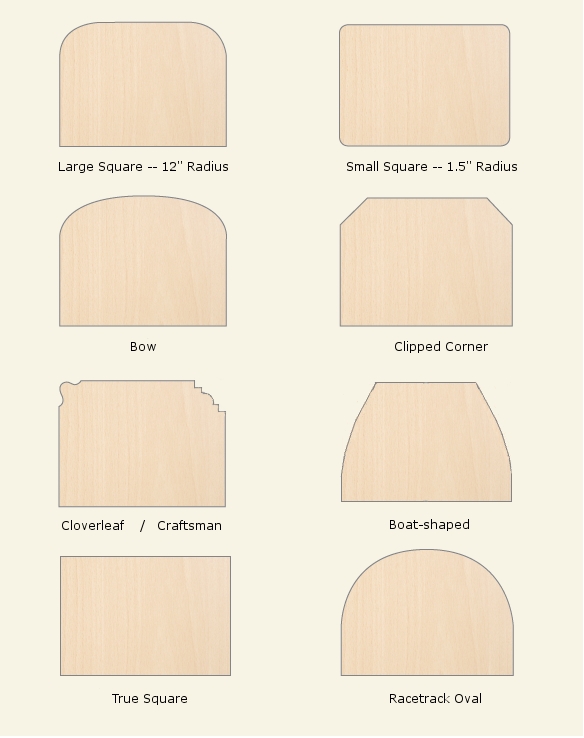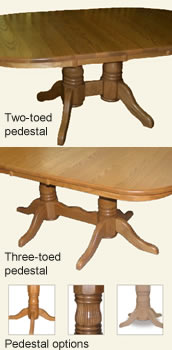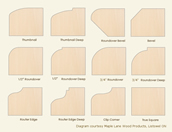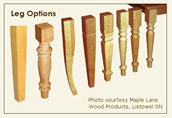Table Features


Table Top


The diagram to the left shows the range of styles available. We can cut radius corners to your specifications, from 1.5" to a full "racetrack" oval. The width and length of the table are determined by the size of the space or room available, the number of people to be accommodated for both everyday use (minimum closed size) and for guests (open or full leaf extension size).
Keep in mind that adding a leaf, usually 12", will not add a place setting. Chairs are generally 18" to 20" wide, so you'd need two leaves to create space for an additional chair. Three leaves, at 36", will generally allow for two additional chairs per side.
Pedestals


If your table has two pedestals, the chairs may either fit between the toes or straddle the toes, often determined by whether there are an even or odd number of chairs per side. It is often possible to avoid straddling a toe by choosing a two-toed pedestal instead of a three-toed design.




Table Leaves


Leaves allow the table top to be enlarged to accommodate the inevitable extra people on special occasions. Even if you need to seat 10 or 12 at these gatherings, be careful to choose your tabletop size to suit your everyday needs. The base (pedestal or legs) is designed to support the table at its smallest size. Even though a table may take two or three leaves, its support structure may not be adequate for its full ("open") size for long periods of time.
Table Leaves
Leaves allow the table top to be enlarged to accommodate the inevitable extra people on special occasions. Even if you need to seat 10 or 12 at these gatherings, be careful to choose your tabletop size to suit your everyday needs. The base (pedestal or legs) is designed to support the table at its smallest size. Even though a table may take two or three leaves, its support structure may not be adequate for its full ("open") size for long periods of time.


Depending on the width and shape of the table, one or two leaves may be stored under the top. The leaves rest on two boards attached to the underside. If your table has three leaves and you want to store them all under the table, you may have the third leaf built without a skirt so it will lay flat on top of the first two leaves.
Most of our tables are made with gear-slider extension mechanisms. These metal fittings have two main advantages over a wood-on-wood slider: they allow the table to be opened and closed easily by one person; and they reduce the wear and tear on your table—and your back.
When you add people (and leaves) to the table, you'll find that some sizes and styles are more flexible than others.
To avoid potential "cram and bump" problems, consider the following:
Width of the table (relative to the size of the pedestal base)
Distance between the pedestal or trestle legs when leaves are both in and out
Shape of the table top— round, square, rectangle (radius, clipped, or square corners), craftsman
We will help ensure that your table is an appropriate size and shape for your chairs, and that it meets your requirements for the number to be seated.


Edging Profiles


Along with the size and shape of the table top come options in the edging profile of the top. The diagram shows most of the profiles available.

